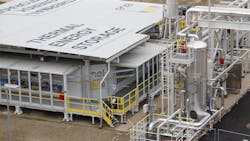Before the end of last year, the White House named industrial heating and long-duration energy storage (LDES) among a number of “game-changing” technologies that are needed to accelerate the development of a net-zero energy system.
Also in Q4 of last year, McKinsey and the Long Duration Energy Storage Council (LDES Council) published a report that finds Thermal Energy Storage (TES) technologies can double global LDES capacity by 2040 and represent a cumulative investment opportunity of up to nearly USD $3 trillion, while the Electric Power Research Institute (EPRI) pointed to TES as a way to repurpose fossil fuel plants, effectively turning them into massive energy storage facilities.
TES is not an entirely new concept (it’s been around since the 1960s), but interest is, for lack of a better term, “heating up.” Here’s why:
TES offers a path toward industrial decarbonization
Industrial heat—needed to make everything from Pepsi to paper—has often been dismissed as “hard to decarbonize.” Industrial organizations run their operations nearly 365 days a year, for around 8,760 hours, and depend on the around-the-clock availability of heat to stay profitable. Some 70% of all industrial heat is still supplied by fossil fuel sources, but as climate policy accelerates and the energy crisis persists, postponing decarbonization only threatens industrial organizations’ bottom lines.
Renewables alone can’t decarbonize industrial heat. There aren’t 8,760 hours of sunshine or wind in a given year to keep industrial facilities up and running full-time. “Heat batteries” are, therefore, needed to overcome renewable intermittency and meet industrial organizations’ demanding energy needs. Thermal storage is considered an especially promising technology for its ability to turn low-cost, renewable electricity into clean steam, hot water, or hot air and deliver continuous heat. According to McKinsey, TES, when used with electric boilers or heat pumps, is the most cost-competitive way to replace natural gas and decarbonize industrial processes.
Forward-looking organizations are already integrating TES systems at their facilities. Fortlev, for example, Brazil’s largest producer of plastic water storage solutions, is using TES to generate hot air and manufacture its products with renewable biomass. The switch to renewable biomass lowered Fortlev’s associated fuel costs by more than 75% and will continue to lower emissions from the site by approximately 800 metric tons per year.
Enabling utility-scale long-duration energy storageThermal energy storage can also help power producers advance their net-zero goals. As more renewables come online, the intermittent nature of solar and wind dictates the need for massive amounts of energy storage capacity to make sure enough clean power is available and accessible when demand peaks. As more renewables come online, TES can also be integrated directly with conventional power plants to keep energy markets running efficiently and the lights on by providing critical flexibility and making today’s power plants more resilient to intermittent renewables. Enel is piloting this approach with a 24 MWh TES system, that can store heat at a temperature of about 550°C, at a 390 MW combined cycle gas turbine plant in Santa Barbara, Italy as a way to increase the overall flexibility of the plant and provide critical resiliency.
TES can also help phase out polluting coal-fired electricity generation, which accounted for over one-third of total electricity generation in 2021. With TES coal power plant owners can repurpose, or “repower,” their operations to meet their net-zero goals on time, by taking advantage of existing grid existing infrastructure, such as steam turbines and grid interconnections at coal power plants. TES systems, or “heat batteries,” can replace the need for coal to turn steam turbines and generate electricity at these plants. Eliminating the use of coal will not only reduce emissions, but can also lower energy costs when charged with excess renewable energy, and preserve local jobs.
Shoring up supply
The ongoing energy crisis is causing public and private sectors alike to reconsider their priorities, with energy affordability and supply security competing for preference with climate policies. But the two need not be mutually exclusive. Rather, climate change technologies offer countries a path to a resilient supply of power and affordable energy prices.
Technically, there are a number of approaches industrial companies and power generators could take to decarbonize, but the economics of thermal storage technologies are what make them particularly attractive. TES can be powered by clean, low-cost renewables, and the storage medium – rocks – are completely sustainable, in abundant supply, and can be sourced locally in practically any region around the world. As the world continues to grapple with competing priorities, TES presents itself as a compelling – and affordable – solution for consideration today.
